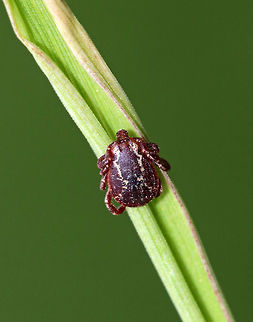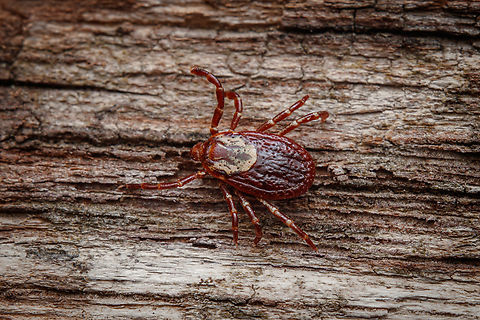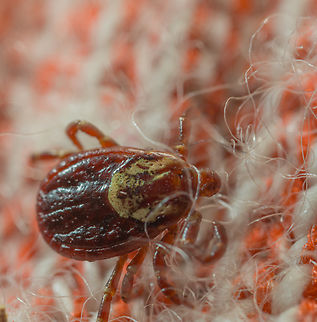
Behavior
The life cycle of ticks can vary depending on the species. The growth stages of a tick start off as an egg, larva , nymph, and finally the adult. The adult female tick lays uninfected eggs. The eggs hatch uninfected larva. These larva commonly feed on mammals such as squirrels, humans, deer, mice, raccoons, and even skunks. They also feed on birds. The nymph continues to feed off of the mammals stated above before maturing into an infected adult. Once the tick reaches the adult stage, it will commonly feed on larger animals such as the opossum, cat, dog, deer, and humans.
Habitat
The American dog tick is a rather colorful tick and is commonly found in highly wooded, shrubby, and long grass areas. Tick numbers can be reduced in your own back yard by cutting the grass, which creates a low humidity environment which is undesired by ticks. Pesticides can also be used and are most effective when they are applied to vegetation that has been cut to a short level.
Evolution
Though ''D. variabilis'' may be exposed to ''Borrelia burgdorferi'', the causative agent of Lyme disease, these ticks are not competent vectors for the transmission of this disease. The primary vectors for ''Borrelia burgdorferi'' are the deer tick ''Ixodes scapularis'' in Eastern parts of the United States, ''Ixodes pacificus'' in California and Oregon, and ''Ixodes ricinus'' in Europe. ''Dermacentor variabilis'' may also carry ''Anaplasma phagocytophilum'', the causative agent of HGE , and ''Ehrlichia chaffeensis'', the causative agent of HME .''Dermacentor'' ticks may also induce tick paralysis by elaboration of a neurotoxin that induces rapidly progressive flaccid quadriparesis similar to Guillain–Barré syndrome. The neurotoxin prevents presynaptic release of acetylcholine from neuromuscular junctions.
References:
Some text fragments are auto parsed from Wikipedia.